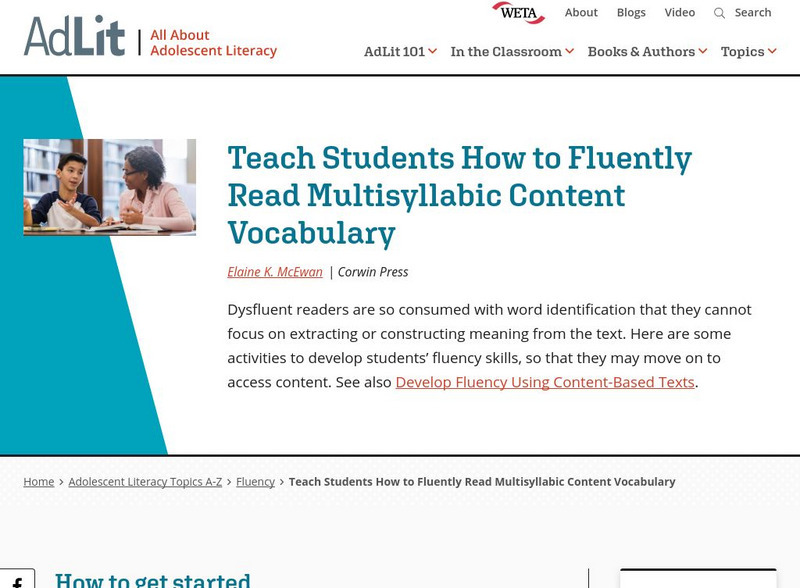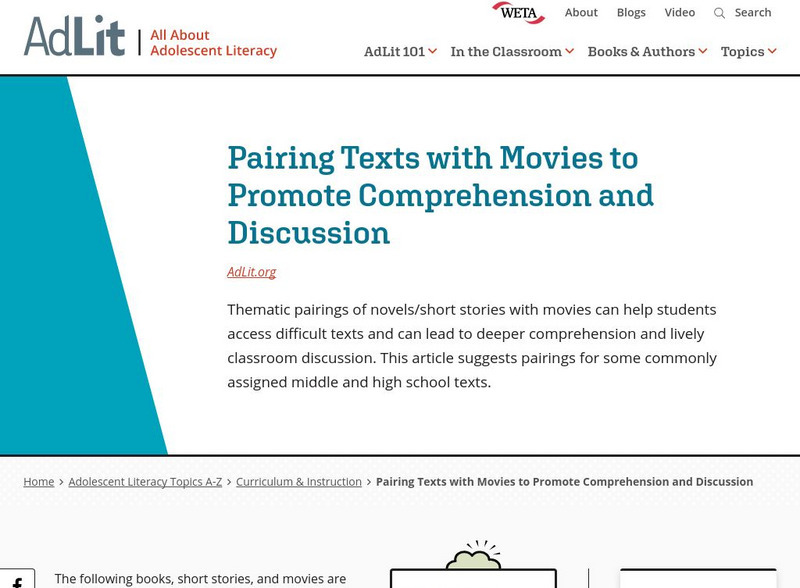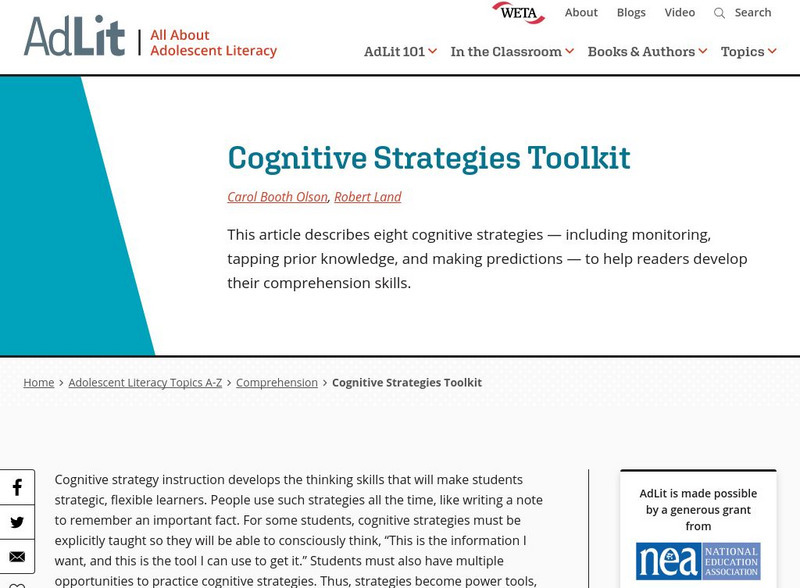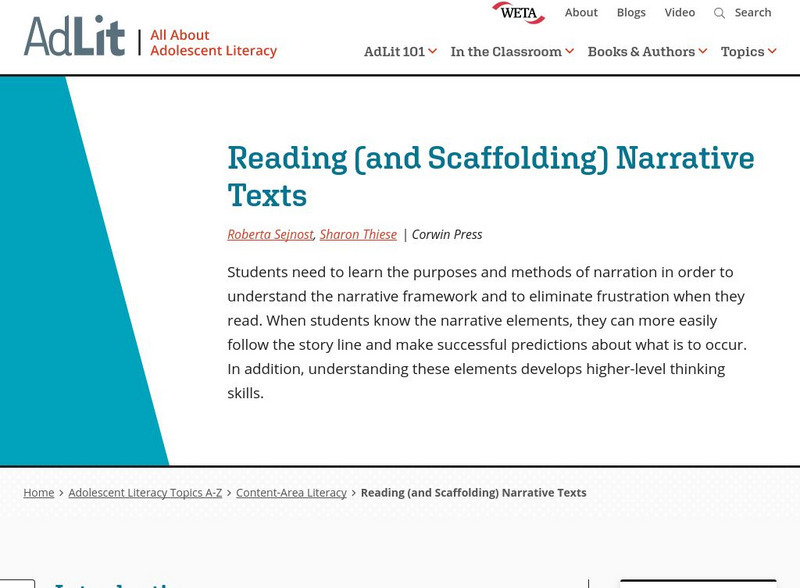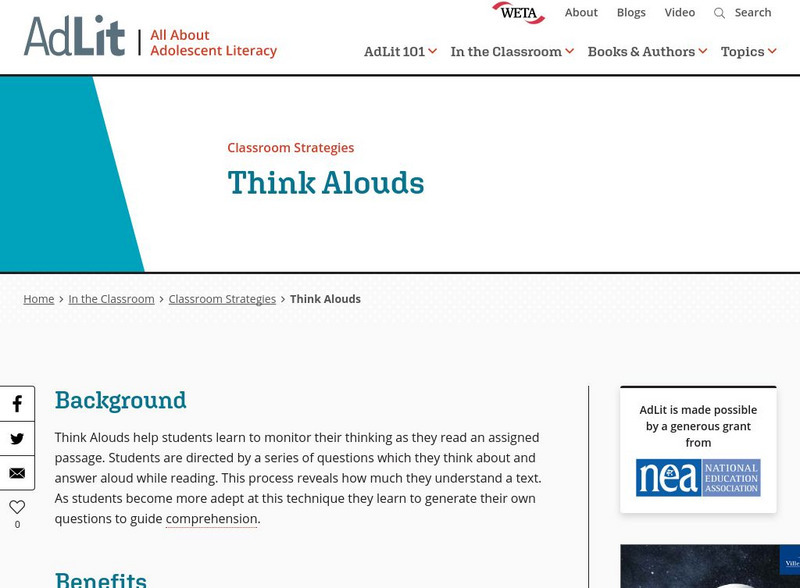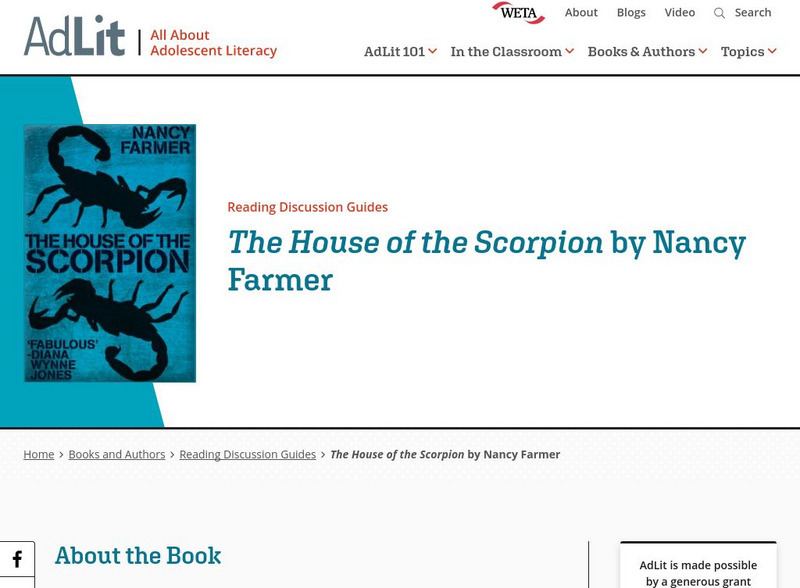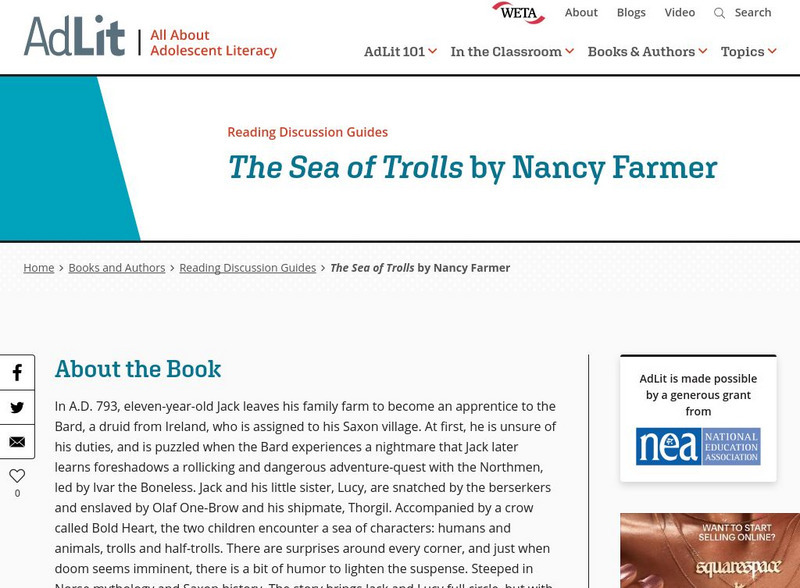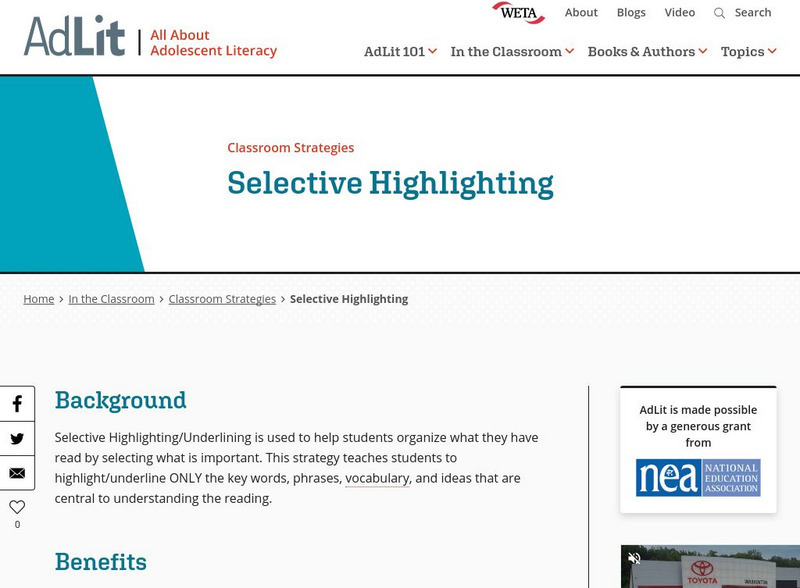AdLit
Ad lit.org: Teach Students How to Fluently Read Multisyllabic Content Vocabulary
Dysfluent readers are so consumed with word identification that they cannot focus on extracting or constructing meaning from the text. Here are some activities to develop students' fluency skills, so that they may move on to access content.
AdLit
Ad lit.org: Key Literacy Component: Morphology
Morphology describes how words are formed from building blocks called morphemes, the smallest unit of meaning in a word. Students who don't understand this structure have trouble recognizing, understanding, and spelling words. Find out...
AdLit
Ad lit.org: Teaching Word Meanings as Concepts
The most effective vocabulary instruction teaches word meanings as concepts; it connects the words being taught with their context and with the students' prior knowledge. Six techniques have proven especially effective: Concept...
AdLit
Ad lit.org: What's the Big Idea? Integrating Young Adult Literature
Drawing on New York City teachers' experiences, this article examines three ways to effectively integrate young adult literature into the curriculum: use core texts (usually novels, but also other genres as well) that the entire class...
AdLit
Ad lit.org: Pairing Texts With Movies to Promote Comprehension and Discussion
Thematic pairings of novels/short stories with movies can help students access difficult texts and can lead to deeper comprehension and lively classroom discussion. This article suggests pairings for some commonly assigned middle and...
AdLit
Ad lit.org: What Schools and Students Can Do to Foster College Readiness
If schools and students understand college readiness in a more comprehensive way, they can do more to develop the full range of capabilities and skills needed to succeed in college. Click on Classroom Strategies on the left of the page...
AdLit
Ad lit.org: Cognitive Strategies Toolkit
This article describes eight cognitive strategies - including monitoring, tapping prior knowledge, and making predictions - to help readers develop their comprehension skills.
AdLit
Ad lit.org: Key Literacy Component: Vocabulary
What's in a word? Mastery of oral and written vocabulary promotes comprehension and communication. Find out how proper instruction can help students who struggle with vocabulary.
AdLit
Ad lit.org: Reading (And Scaffolding) Narrative Texts
Students need to learn the purposes and methods of narration in order to understand the narrative framework and to eliminate frustration when they read. When students know the narrative elements, they can more easily follow the story...
AdLit
Ad lit.org: Classroom Strategies: Think Alouds
Think Alouds help students learn to monitor their thinking as they read an assigned passage. Students are directed by a series of questions which they think about and answer aloud while reading. This process reveals how much they...
AdLit
Ad lit.org: Why Students Think They Understand When They Don't
Students often think they understand a body of material and, believing that they know it, stop trying to learn more. But come test time, it turns out they really don't know the material very well at all. Can cognitive science tell us...
AdLit
Ad lit.org: Classroom Strategies: Double Entry Journals
The Double-Entry Journal strategy enables students to record their responses to text as they read. Students write down phrases or sentences from their assigned reading and then write their own reaction to that passage. The purpose of...
AdLit
Ad lit.org: Classroom Strategies: Monitoring/clarifying
The Monitoring/Clarifying strategy teaches students to recognize when they don't understand parts of a text and to take necessary steps to restore meaning. This technique is a component of the Reciprocal Teaching model in which teachers...
AdLit
Ad lit.org: Classroom Strategies: Paired Reading
The Paired Reading strategy encourages peer teaching and learning. Students are divided into pairs and read along together or take turns reading aloud to each other. Pairs can have the same reading ability or can include a more fluent...
AdLit
Ad lit.org: Classroom Strategies: Paragraph Shrinking
Paragraph Shrinking is an activity developed as part of the Peer-Assisted Learning Strategies (PALS). PALS is a classwide peer tutoring program in which teachers carefully partner a student with a classmate. The Paragraph Shrinking...
AdLit
Ad lit.org: Reading Discussion Guide: A Troubled Peace by l.m. Elliott
A Troubled Peace, the sequel to L. M. Elliott's award-winning Under a War-Torn Sky, chronicles nineteen-year-old U.S. Air Force pilot Henry Forester's adventures in France from March through July 1945. Although Henry safely returned from...
AdLit
Ad lit.org: Reading Discussion Guide: The House of the Scorpion by Nancy Farmer
Matt is a clone of El Patron, a powerful drug lord of the land of Opium, located between the United States and Mexico. For six years, he has lived in a tiny cottage in the poppy fields with Celia, a kind and deeply religious servant...
AdLit
Ad lit.org: Reading Discussion Guide: The Sea of Trolls by Nancy Farmer
In A.D. 793, eleven-year-old Jack leaves his family farm to become an apprentice to the Bard, a druid from Ireland, who is assigned to his Saxon village. At first, he is unsure of his duties, and is puzzled when the Bard experiences a...
AdLit
Ad lit.org: Reading Discussion Guide: Weedflower by Cynthia Kadohata
Twelve-year-old Sumiko feels her life has been made up of two parts: before Pearl Harbor and after it. The good part and the bad part. Raised on a flower farm in California, Sumiko is used to being the only Japanese girl in her class....
AdLit
Ad lit.org: Classroom Strategies: Think Pair Share
Think-Pair-Share (TPS) is a collaborative learning strategy in which students work together to solve a problem or answer a question about an assigned reading. This technique requires students to (1) think individually about a topic or...
AdLit
Ad lit.org: Classroom Strategies: Reciprocal Teaching
Reciprocal Teaching is a strategy that asks students and teachers to share the role of teacher by allowing both to lead the discussion about a given reading. Reciprocal Teaching involves four strategies that guide the discussion:...
AdLit
Ad lit.org: Classroom Strategies: Selective Highlighting
Selective Highlighting/Underlining is used to help students organize what they have read by selecting what is important. This strategy teaches students to highlight/underline ONLY the key words, phrases, vocabulary, and ideas that are...
AdLit
Ad lit.org: Classroom Strategies: Semantic Feature Analysis
The Semantic Feature Analysis strategy engages students in reading assignments by asking them to relate selected vocabulary to key features of the text. This technique uses a matrix to help students discover how one set of things is...
AdLit
Ad lit.org: Classroom Strategies: Story Maps
Story Maps are used for teaching students to work with story structure for better comprehension. This technique uses visual representations to help students organize important elements of a story. Students learn to summarize the main...


